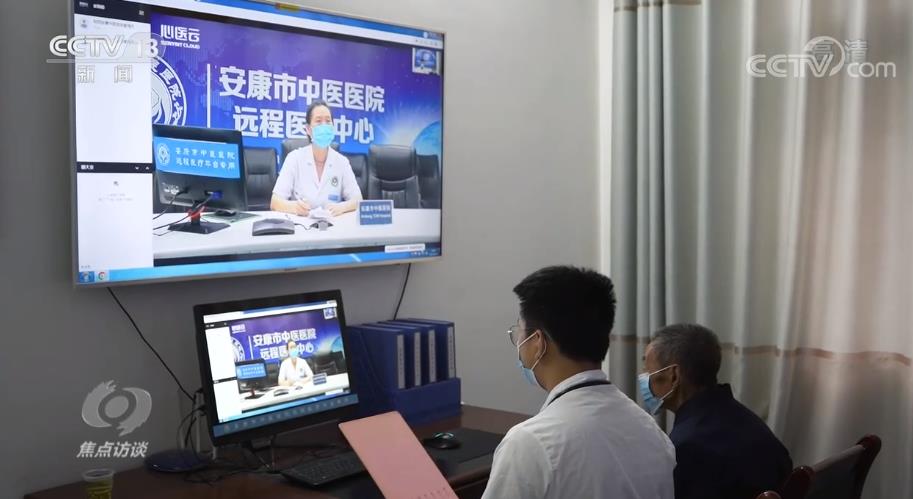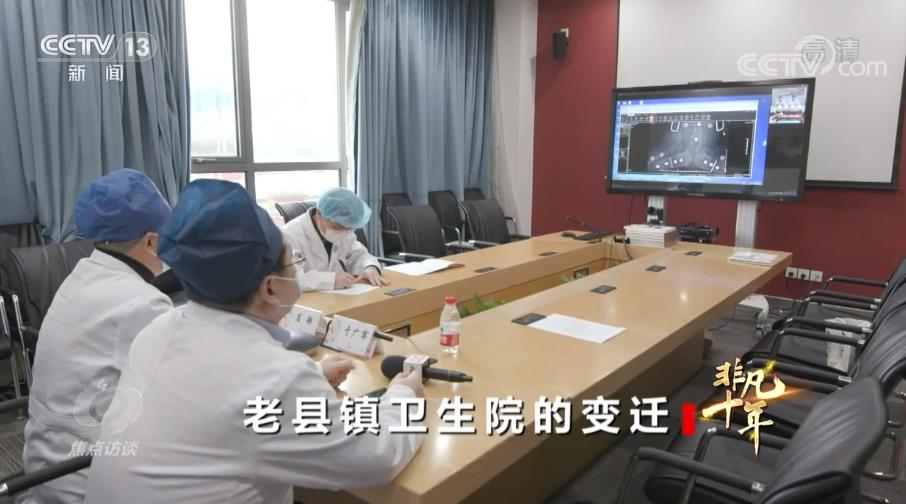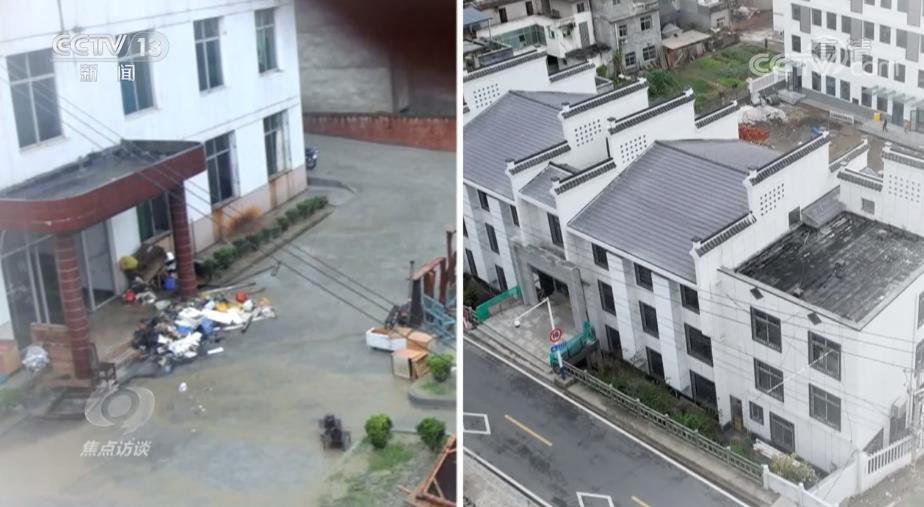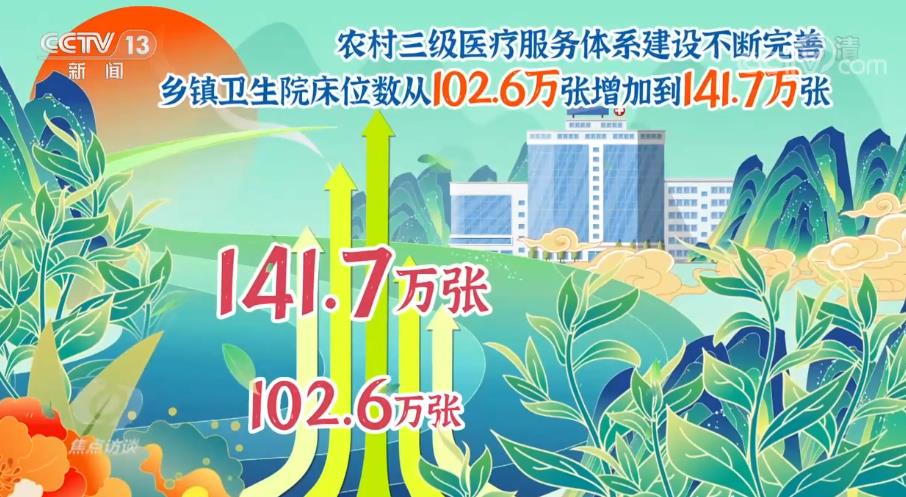Focus interview: the changes of old county and town hospitals in the past ten years
Cctv news(Focus Interview): "When the ambulance rings, a pig is raised for nothing." This once jingle once reflected the medical difficulties faced by some remote rural areas in our country in the past. Since the 18th National Congress of the Communist Party of China, China has continuously increased its investment in rural health care, coordinating medical resources, improving medical conditions, strengthening medical teams and innovating service methods through various measures. In the past ten years, farmers’ friends have really enjoyed timely, low-cost and effective medical services.
Zhang Mingzhong is a villager in Muguagou Village, Laoxian Town, Ankang City, Shaanxi Province. He is 84 years old and has suffered from chronic obstructive pulmonary disease and coronary heart disease for many years. He often coughs and feels chest tightness.

Recently, because the treatment effect is not obvious, the old county and town health centers made an appointment for Zhang Mingzhong through this telemedicine consultation platform — — An expert from Ankang Hospital of Traditional Chinese Medicine visited him online.
The old man Zhang Mingzhong was very happy that he didn’t have to go to the city for trouble, and he could let the experts in the city hospital see a doctor in the town health center.
Now, there are about 150 patients like Zhang Mingzhong in old county health centers every year, who get help through remote diagnosis and treatment.
The construction of this telemedicine platform not only facilitates patients, but also improves the diagnosis and treatment level of primary hospitals.

In recent years, the state has been promoting the construction of such an "Internet+medical health" service system, encouraging higher-level medical institutions to provide remote consultation and other medical services to the grassroots, so that grassroots people can also share high-quality medical resources, and at the same time improve the ability and efficiency of primary medical services. This is only one aspect of the development and changes of primary hospitals in recent years.
Zhang Mingzhong, an old man suffering from chronic diseases, often ran to the town health center for more than ten years. He felt the most profound changes in all aspects of the town health center in recent years: "More than ten years ago, there was a snowy cold wind, and the beds were all door panels. Some people brought quilts, some people didn’t have quilts, and they were extremely frozen. Good people were frozen into patients. That’s the condition."
More than a decade ago, there was only a dilapidated three-story building in the old county town health center, and it would still get water when it rained heavily in summer. The poor hospitalization conditions and the lack of medical facilities not only affect the diagnosis and treatment effect, but also dampen the enthusiasm of doctors.
Chen Tao, vice president of the Central Health Center of Laoxian Town, Pingli County, Shaanxi Province, said: "The laboratory is a microscope, and the blood routine and urine routine are basically counted by naked eyes under that microscope to see what the results are. At that time, there was an old radiation machine, all of which were part-time doctors in other departments. When developing films, we had to adjust the developing water ourselves and put it in the developing water so that the films could be seen. Many young doctors jumped ship and left. "
Because of the poor conditions in all aspects, it was difficult for the town hospitals at that time to retain talents.
Dr. He Yongmei worked in the old county health center for nearly 20 years. In her memory, the local people didn’t trust them because of the poor conditions in all aspects, and they went to the county and the city to see them when they were sick.

Changes have taken place step by step in this decade.
In the past ten years, China has continuously strengthened the construction of primary health care service system and introduced various measures to promote the high-quality development of primary health care.
和全国许多地方的基层医疗卫生机构一样,老县镇卫生院的硬件设施不断改进,2017年门诊楼重新进行了翻修,就诊环境得到明显改善。
医疗设备也经过几次升级换代,现在已经用上了较为先进的设备。
在国家政策的支持下,老县镇卫生院医护人员的待遇也有了保障和大幅提高。
同时,为让基层医院能有更多人才,当地也出台了政策,鼓励高校医学专业毕业生到基层就业,在编制、待遇等各方面给予倾斜。老县镇卫生院由此也留住了更多的人才。
十年前,老县镇卫生院一共十名职工,其中医生只有两名,而现在有二十八名职工,持有执业医师资格证的有六名,助理医师四名。
现在,越来越多的当地群众选择在镇卫生院就医,老县镇卫生院的接诊人次比十年前翻了一倍。
2020年4月21日,是老县镇卫生院的医护人员们一个难忘的日子。那天,习总书记来到这里,了解基层卫生防疫和医疗保障工作,并向医务人员表示亲切慰问。
最高领袖总书记专门指出,要加快补齐公共卫生服务短板。何咏梅医生当时也在现场,她亲身感受到了习总书记对医护人员的关爱,和对群众身心健康的重视,非常受鼓舞。
让老百姓都能吃得起药、看得上病,是总书记心头的牵挂。

After General Secretary Xi’s inspection, two and a half years have passed, and many changes have taken place in the old county hospitals. Now, the old outpatient building is being rebuilt, and the new comprehensive building is also under construction. It is expected to be put into use in mid-October.
In the past ten years, in order to achieve "medical care for everyone", especially for people in grassroots and remote areas to enjoy high-quality medical services, the state has successively introduced a series of measures to promote primary health care reform.
With the support of national policies, in 2018, the old county and town health centers set up a family doctor contract service team to provide on-site medical services to nearby villagers. Twenty-eight medical staff in the hospital formed five service teams, covering all 11 villages in the old counties and towns.
Chen Dihong, a 44-year-old villager in Muguagou Village, suffers from high blood pressure and his father suffers from chronic obstructive pulmonary disease. The family doctor service team visits his home every quarter.
The family doctor service team is generally composed of doctors from primary hospitals and village doctors. Among them, village doctors are responsible for daily disease monitoring and service, while other doctors visit doctors regularly. If you encounter a more complicated illness, the team will quickly contact the superior hospital for referral.
The contract service of family doctors is open to all the people, and priority is given to poverty-stricken households and key people with chronic diseases.

At present, there are 5,190 poverty-stricken households in 1,825 old counties and towns, and 1,286 chronic disease patients in 4 categories who are not poverty-stricken households, all of which have implemented the contract service of family doctors, and the basic medical needs of more than 20,000 people in the jurisdiction and surrounding areas have been met.
Like the old counties and towns, the contract service of family doctors is gradually promoted all over the country.
Chen Peng worked as a village doctor in Muguagou Village for nearly 30 years. He felt deeply about the great changes in primary medical services in these years: "In the past, the conditions were poor, the clinic house was wet, and there was no medicine for another one. Now the village doctor has a resident village clinic with complete medicines. Dean Zheng of the town health center is our doctor in Baocun, which can be said to be our doctor’s teacher."
We have been working hard for ten years to continuously improve the medical and health service system and build a healthy China. And all this is for the health of the people. This is a vivid manifestation of our Party’s Do not forget your initiative mind and serving the people wholeheartedly.
In the past ten years, China’s health undertakings have developed in an all-round way.

The construction of tertiary medical service system in rural areas has been continuously improved. The number of beds in township hospitals has increased from 1.026 million to 1.417 million, and the number of practicing (assistant) doctors in village clinics has increased from 193,000 to 476,000. The conditions for medical treatment in rural areas have been continuously improved.
The number of hospitals nationwide has increased from 21,979 to 36,570, and the convenience and quality of people’s medical treatment have been significantly improved.
The national medical insurance has continued to develop healthily, and the annual payment of basic medical insurance has increased from more than 457 billion yuan to 2.4 trillion yuan, more than five times that of ten years ago.
In the past ten years, through a series of system construction, we have tried our best to ensure that people get medical treatment, and the average life expectancy of the people in the country has increased from 76 years to 78.2 years.